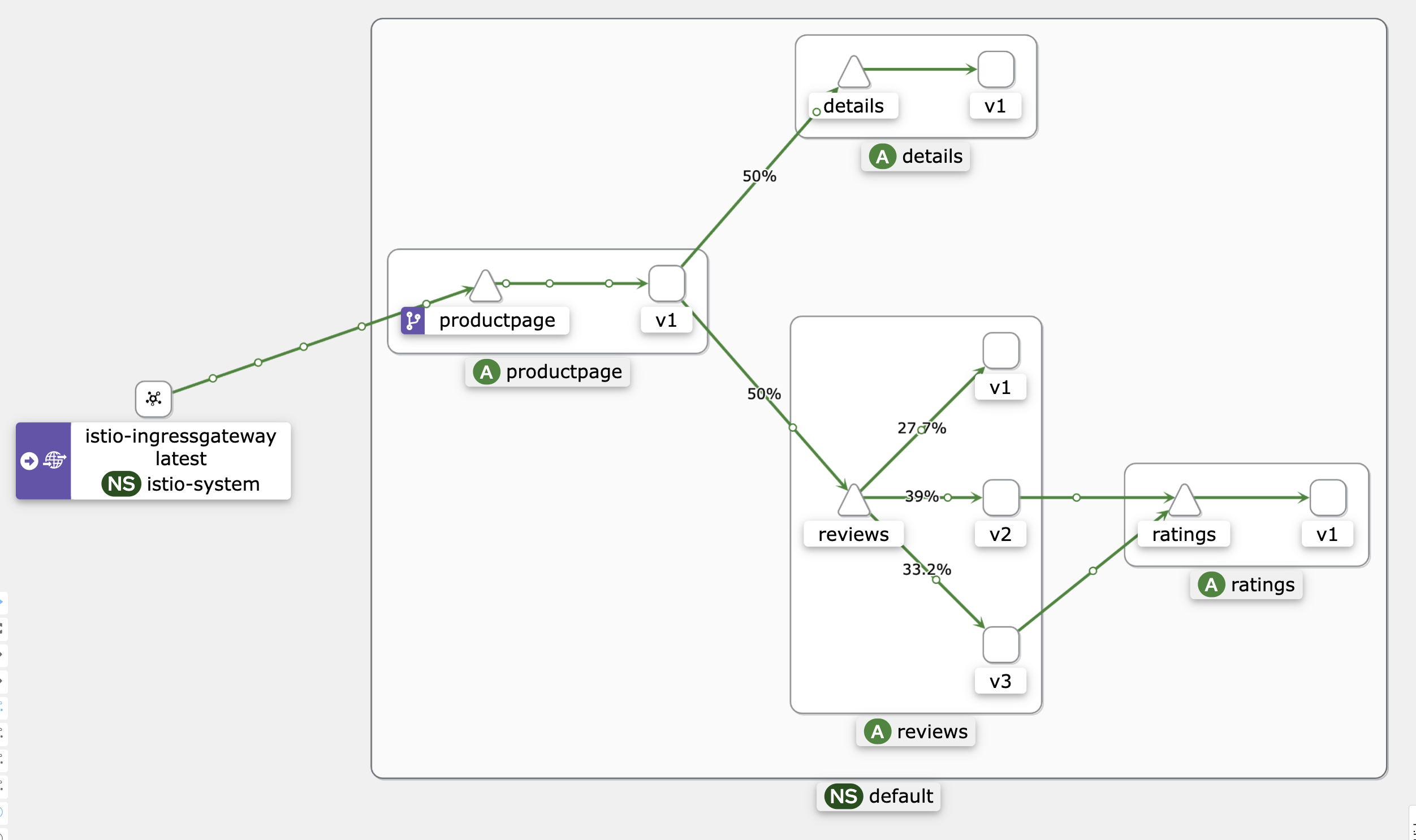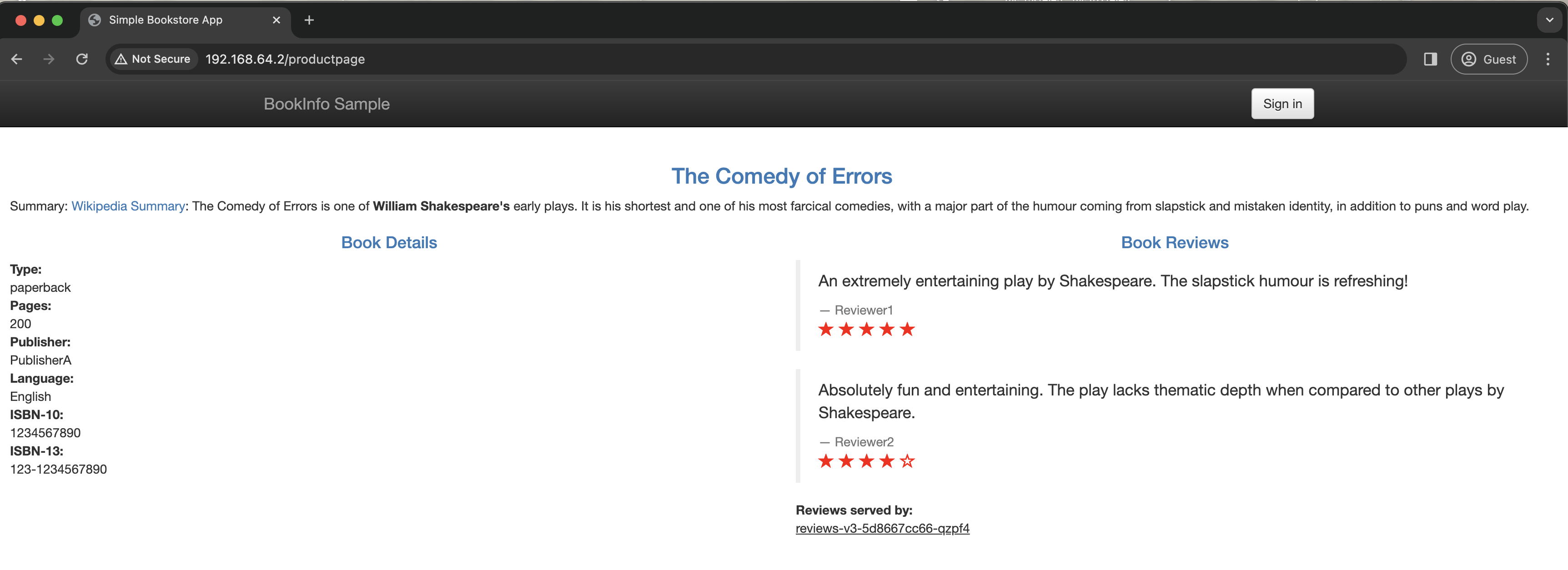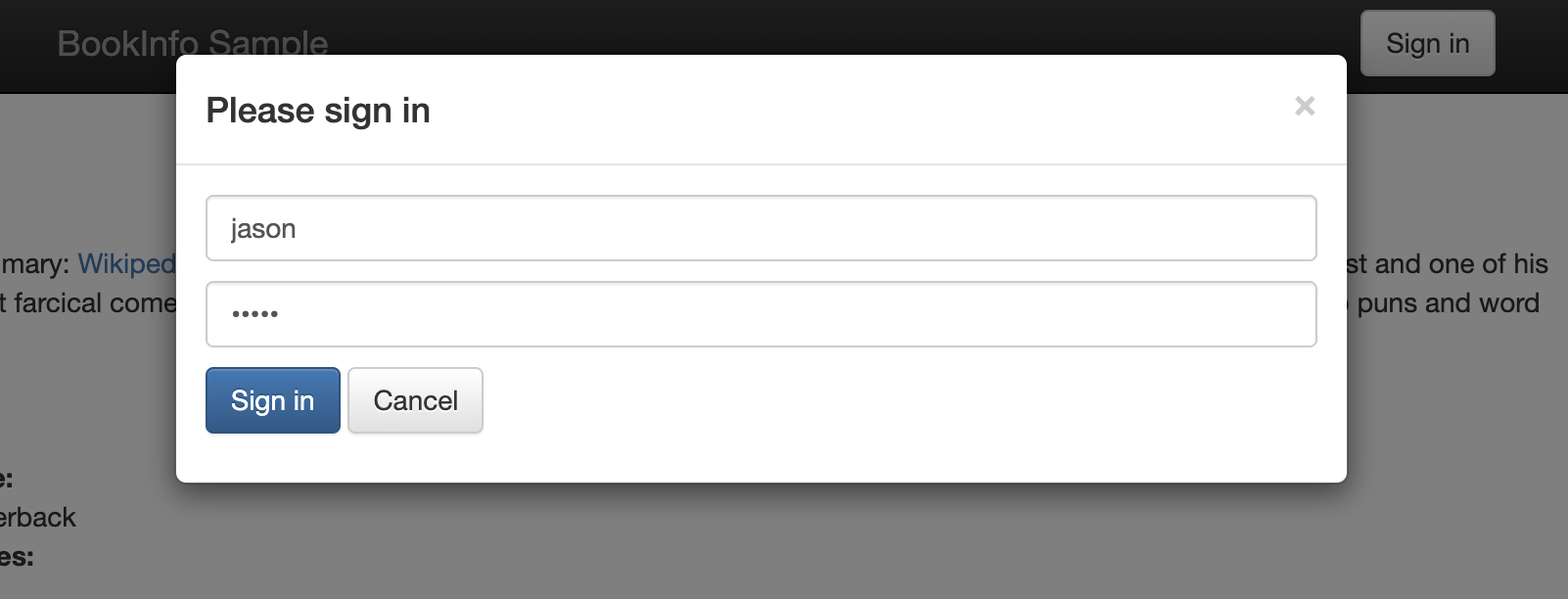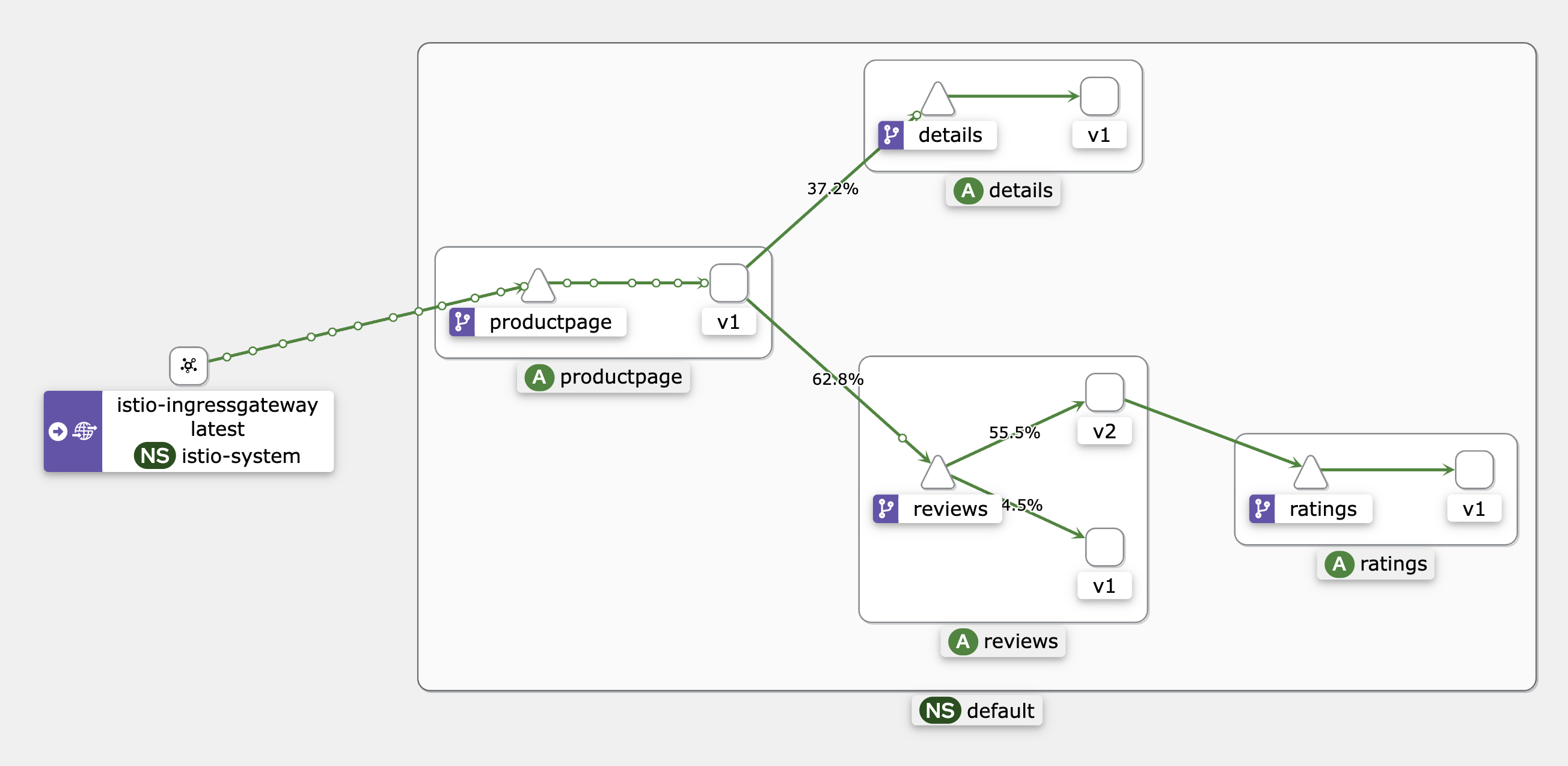Istio ‘Bookinfo’ 데모

이번 포스트에선 Istio 공식 문서로 나와있는 Bookinfo 예제를 따라서 실습 해보고, 그 과정을 정리해보고자 한다. 📚
일단 book info 예제의 전체 구조는 요렇다.
일단 띄우고 보자
kubectl apply -f https://raw.githubusercontent.com/istio/istio/release-1.20/samples/bookinfo/platform/kube/bookinfo.yaml

뭔가가 잔뜩 떴다!
Bookinfo는 일종의 “웹앱“이다. 외부에서 어플리케이션에 접근할 수 있도록 IngressGateway 리소스와 물려보자. 아래의 커맨드를 실행하면, Gateway와 VirtualService 리소스가 생성된다.
kubectl apply -f https://raw.githubusercontent.com/istio/istio/release-1.20/samples/bookinfo/networking/bookinfo-gateway.yaml
Gateway 리소스는 istio의 default IngressGateway인 isito-ingressgateway와 물려있다.
해당 default IngressGateway는 LoadBalancer 타입의 K8s Service로 노출된다.

해당 K8s Service의 EXTERNAL-IP인 192.168.64.2에 접속 해보자!

와!! 웹앱에 접속했다!!
 kiali로 확인하면, 전체 구조가 한눈에 들어온다!
kiali로 확인하면, 전체 구조가 한눈에 들어온다!
전체 어플리케이션의 구조를 다시 보면, 리뷰 항목을 보여주는 부분이 3개의 버전으로 나눠져 있다. 그래서 페이지를 새로고침(refresh) 할 때마다 아래 3가지 뷰가 번갈아가며 보인다.
- 별점이 없는 뷰
- 별점이 있으나 검은색으로 표시되는 뷰
- 별점이 있으나 붉은색으로 표시되는 뷰
 이번에는 별점이 붉은색으로 보인다!
이번에는 별점이 붉은색으로 보인다!
버전별 트래픽 제어하기
이번에는 istio의 DestinationRule과 VirtualService를 사용해서 앱 버전별로 트래픽을 분산하고 제어해보려고 한다.
우선 DestinationRule 리소스를 먼저 생성하자. 내용은 별거 없고 그냥 앱 버전별 subset만 분리되어 있다.
kubectl apply -f https://raw.githubusercontent.com/istio/istio/release-1.20/samples/bookinfo/networking/destination-rule-all.yaml

각 Service 엔드포인트 별 DestinationRule 리소스가 잘 생성 되었다!!
이제부터는 istio의 Traffic Management / Request Routing 문서를 보며, 버전별 트래픽을 제어 해보자.
전부 v1에 라우팅
아래 커맨드로 전부 v1으로 보내는 VirtualService를 생성한다.
$ kubectl apply -f https://raw.githubusercontent.com/istio/istio/release-1.20/samples/bookinfo/networking/virtual-service-all-v1.yaml

이렇게 하고, 다시 웹앱에 접속해보면, 리뷰만 보일 뿐 더이상 별점 정보는 보이지 않는다.

Kiali로 확인해봐도, Reviews 워크로드에서 v1으로만 트래픽이 흐르고 있다!
로그인 정보 있는 유저에겐 v2로 라우팅
놀랍게도!! bookinfo 예제에는 로그인 기능도 구현되어 있다!! (,,⟡o⟡,,)

우측 상단의 Sign in 버튼으로 로그인 창을 띄워서 ID/PW 둘다 jason으로 접속하면 로그인이 된다!!
우린 로그인한 유저에게는 Review에 별점(rating)이 함께 보이도록 하고 싶다. 그러기 위해서 아래와 같이 Request Header 기반으로 routing 하는 VirtualService 리소스를 추가해보자!
apiVersion: networking.istio.io/v1beta1
kind: VirtualService
...
spec:
hosts:
- reviews
http:
- match:
- headers:
end-user:
exact: jason
route:
- destination:
host: reviews
subset: v2
- route:
- destination:
host: reviews
subset: v1
$ kubectl apply -f https://raw.githubusercontent.com/istio/istio/release-1.20/samples/bookinfo/networking/virtual-service-reviews-test-v2.yaml

와우! 유저 jason은 이제 리뷰의 별점 정보도 확인할 수 있게 되었다!!

Kiali로 확인해보면, 이젠 v2로도 트래픽이 가고 있다!
맺음말

야호~~~ 이것으로 Istio에서 제공하는 가장 기본적인 예제인 bookinfo 예제를 맛보기 했다 (っ˘ڡ˘ς)
처음에는 예제도 어려워 보였는데, 막상 하라는 대로 해보니 별로 안 어려웠던 것 같다 ㅋㅋ 특히 Kiali로 네트워크 Topology를 바로 확인할 수 있어서 구조를 이해하는데 너무너무너무 편했다!!
이젠 Istio 자격증 시험 준비하면서 조금 깊게 공부한 내용들을 블로그에 정리해보려고 한다 ㅎㅎ
(부록) 한번에 bookinfo 띄우고/내리기
bookinfo 예제는 시각적이기도 하고, 간단하게 MSA 구조를 띄워볼 수 있는 예제라서 istio 문서에서 istio의 기능을 소개할 때 요 bookinfo 예제를 바탕으로 설명하는 것들이 꽤 있다.
 예를 들면, 이렇게 나온다 (istio의 Fault Injection 문서의 한 부분)
예를 들면, 이렇게 나온다 (istio의 Fault Injection 문서의 한 부분)
그래서 bookinfo 어플리케이션을 띄워두고 이런 기능들을 실험하고 익히는 경우가 많은데, 한번에 bookinfo 어플리케이션을 띄우고, 또 내리는 커맨드를 정리해봤다.
# 띄울 때
# istiod, istio-ingressgateway, kiali는 이미 떴다고 가정
$ kubectl apply -f https://raw.githubusercontent.com/istio/istio/release-1.20/samples/bookinfo/platform/kube/bookinfo.yaml
$ kubectl apply -f https://raw.githubusercontent.com/istio/istio/release-1.20/samples/bookinfo/networking/destination-rule-all.yaml
# 내릴 때
$ kubectl delete -f https://raw.githubusercontent.com/istio/istio/release-1.20/samples/bookinfo/networking/destination-rule-all.yaml
$ kubectl delete -f https://raw.githubusercontent.com/istio/istio/release-1.20/samples/bookinfo/platform/kube/bookinfo.yaml
